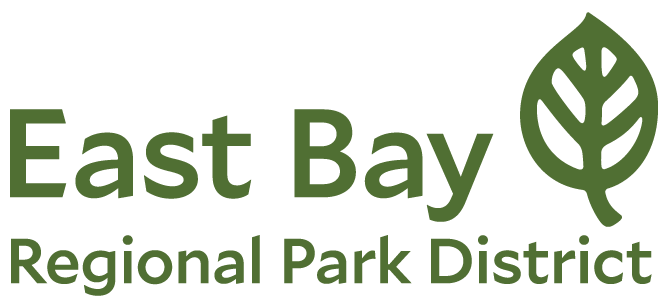Updates From Around the District
The rise of catastrophic wildfires prompts new funding and constant vigilance.
Wherever you live in Alameda County or Contra Costa, there is a beautiful regional park within a 15-minute drive. The downside? Fire risk.
“Contra Costa and Alameda County, you’re as vulnerable as Butte County,” pointed out Governor Gavin Newsom, referring to Butte County’s devastating Camp Fire, at a Bay Area news conference this spring. His visit came just a few weeks after he issued an emergency proclamation advancing wildfire safety projects in more than 200 California communities, including collaborative efforts with the East Bay Regional Park District.
The state’s efforts bolster the Park District’s already deep commitment to protecting lives, property, and treasured open spaces. The Park District Fire Department works throughout the year using on-the-ground crews to remove hazardous vegetation—the dense brush, debris, and tall grasses, together referred to as the fuel load. Strategic thinning of forests, especially invasive eucalyptus groves, allows more fire-resistant native species such as oaks, bays, and willows to grow.
The Fire Department uses sophisticated equipment to monitor weather and wildfire conditions, setting park rules and restrictions based on current risk. In addition, many site-specific efforts are currently underway.
Here’s an overview:

1. Bayside to Hillside — Richmond to Fremont
The East Bay Regional Park District is a founding member of the Hills Emergency Forum (HEF), a collaboration of fire departments and public governing agencies working together to assess, prevent/mitigate, prepare and respond to fires in the East Bay Hills. This area includes some of the most fire-prone areas in the East Bay and stretches from the San Pablo Bay north of Richmond to southern San Francisco Bay near Fremont. It includes hillside parks, such as Tilden, Redwood, and Anthony Chabot, as well as shoreline parks such as Robert W. Crown Memorial State Beach and Hayward Shoreline. Goat grazing is important for these parks where vegetation and grasses need to be managed frequently. Goats help remove everything from flammable vegetation to non-native species.
Fall 2018’s election day was November 6, just two days before the outbreak of the Camp Fire, which destroyed the town of Paradise and is now the state’s most destructive fire on record. On that day, voters in western Alameda and Contra Costa counties passed Measure FF with an unprecedented majority of 85.6 percent. The measure provides $66 million over the next 20 years for regional park services and improvements, including wildfire protection, public safety, public access, and habitat protection and restoration.
This funding extends the work of Measure CC, passed in 2004 and addresses areas near the 1991 Tunnel Fire. That fire, also known as the Oakland- Berkeley Firestorm, now ranks as the third most destructive fire in California history.
The Park District’s “Wildfire Hazard Reduction and Resource Management Plan” for the area was developed with community input and with exhaustive review by local, regional, state, and federal agencies. It provides site-specific goals and direction for fuels management treatments on nearly 140 Recommended Treatment Areas, totaling approximately 3,000 acres in densely-wooded, fire-prone areas nearest to neighborhoods.
2. San Ramon Valley and Tri-Valley — San Ramon, Danville, Dublin, Pleasanton and Livermore
The rapidly growing population centers south of Mount Diablo enjoy many of the District’s largest parks, including Las Trampas, Pleasanton Ridge, and Sunol.
Ongoing fire protection includes regular maintenance, such as mowing tall grasses along roads and trails, and pruning trees and brush to reduce fire hazards and allow clear access for fire-fighting equipment. An extensive cattle-grazing program also keeps wildfires in check.
Of special interest, the 2018-19 state budget contains $5.1 million earmarked for improvements at Del Valle Regional Park, the lakefront jewel 10 miles south of Livermore. The funding supports water-delivery infrastructure and other critical upgrades for the 4,395-acre park.
In this area, the Park District partners with other fire agencies including the Alameda County Fire Department, Livermore-Pleasanton Fire Department, and San Ramon Valley Fire Protection District.
3. Central to East Contra Costa — Orinda to the Sacramento Delta
The suburban communities along Highway 24, north on 680, and east on Highway 4 share inspiring views of Mount Diablo. They also enjoy proximity to hiking, recreation, and history at beloved parks such as Briones and Black Diamond Mines. Cattle grazing is key to reducing fire risks and keeping fire fuels in check in these parks.
Governor Newsom’s 2019 emergency proclamation is helping a coalition of agencies to immediately work on a project called the North Orinda Fuel Break. It is designed to protect a vast area from Hercules and Pinole to Concord and Walnut Creek. According to the San Francisco Chronicle, the project has the potential to reduce the fire risk for 561,000 people in 30 East Bay communities.
This project complements the Park District’s wildfire protection efforts. Weather stations, such as the one at Black Diamond Mines, adjacent to Pittsburg and Antioch, supply daily temperatures, dew point, humidity, wind speed, wind direction, precipitation, and more. “There is a daily transmission of weather conditions to all park staff,” says Park District Fire Chief Aileen Theile. “It lets them know what the burn index is going to be and what restrictions are in place, so we can keep our park visitors safe.”
In this area, the Park District partners with other fire agencies including the Contra Costa County Fire Protection District, East Contra Costa Fire Protection District, and Moraga-Orinda Fire District.
The East Bay Regional Park District is the largest regional park system in the nation, comprising 73 parks, 55 miles of shoreline, and 1,250 miles of trails for hiking, biking, horseback riding, and nature learning. The Park District receives more than 25 million visits annually throughout Alameda and Contra Costa counties in the San Francisco Bay Area.
Dave Mason, Public Information Supervisor
(925) 482-7078
dmason@ebparks.org






